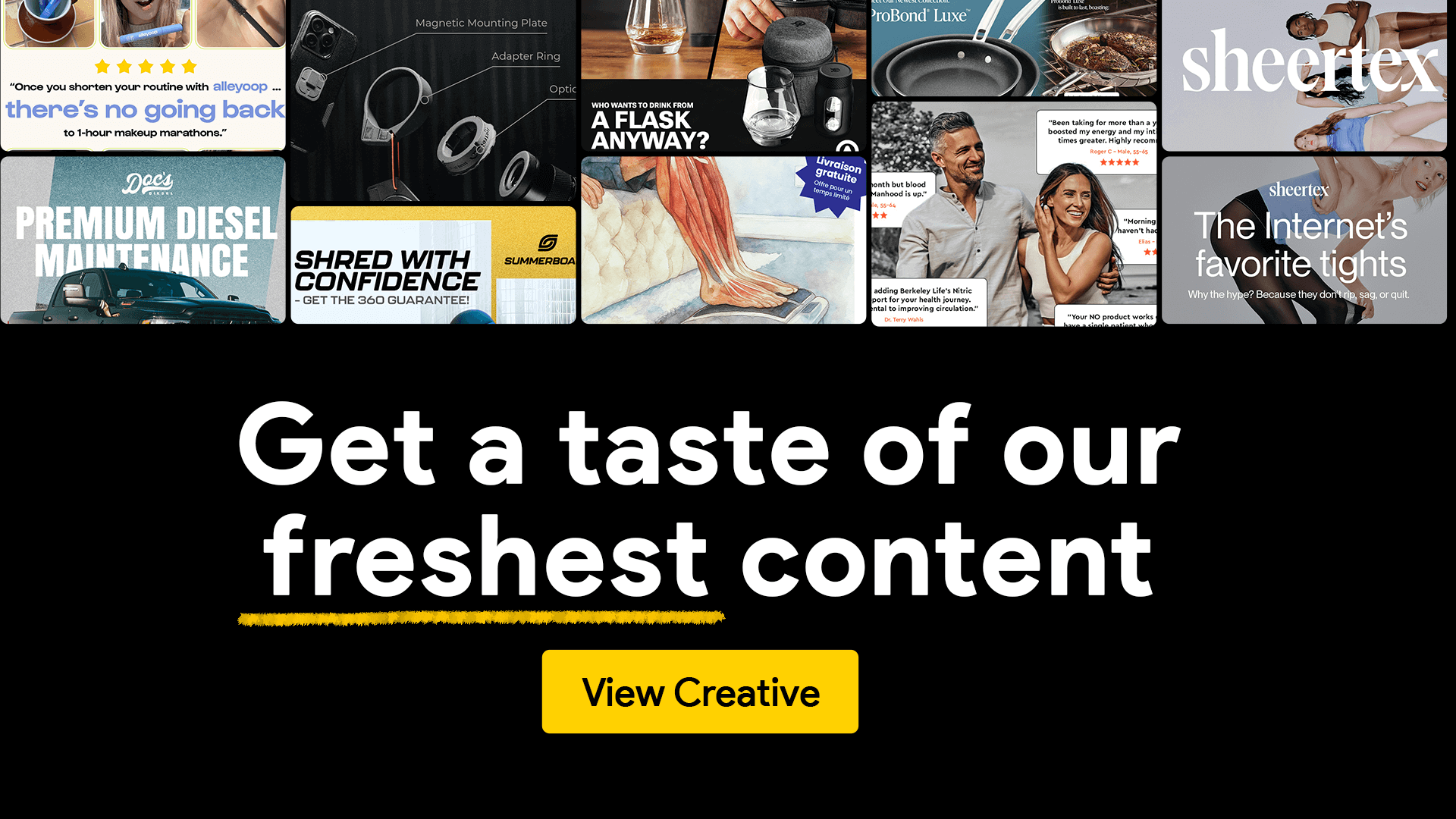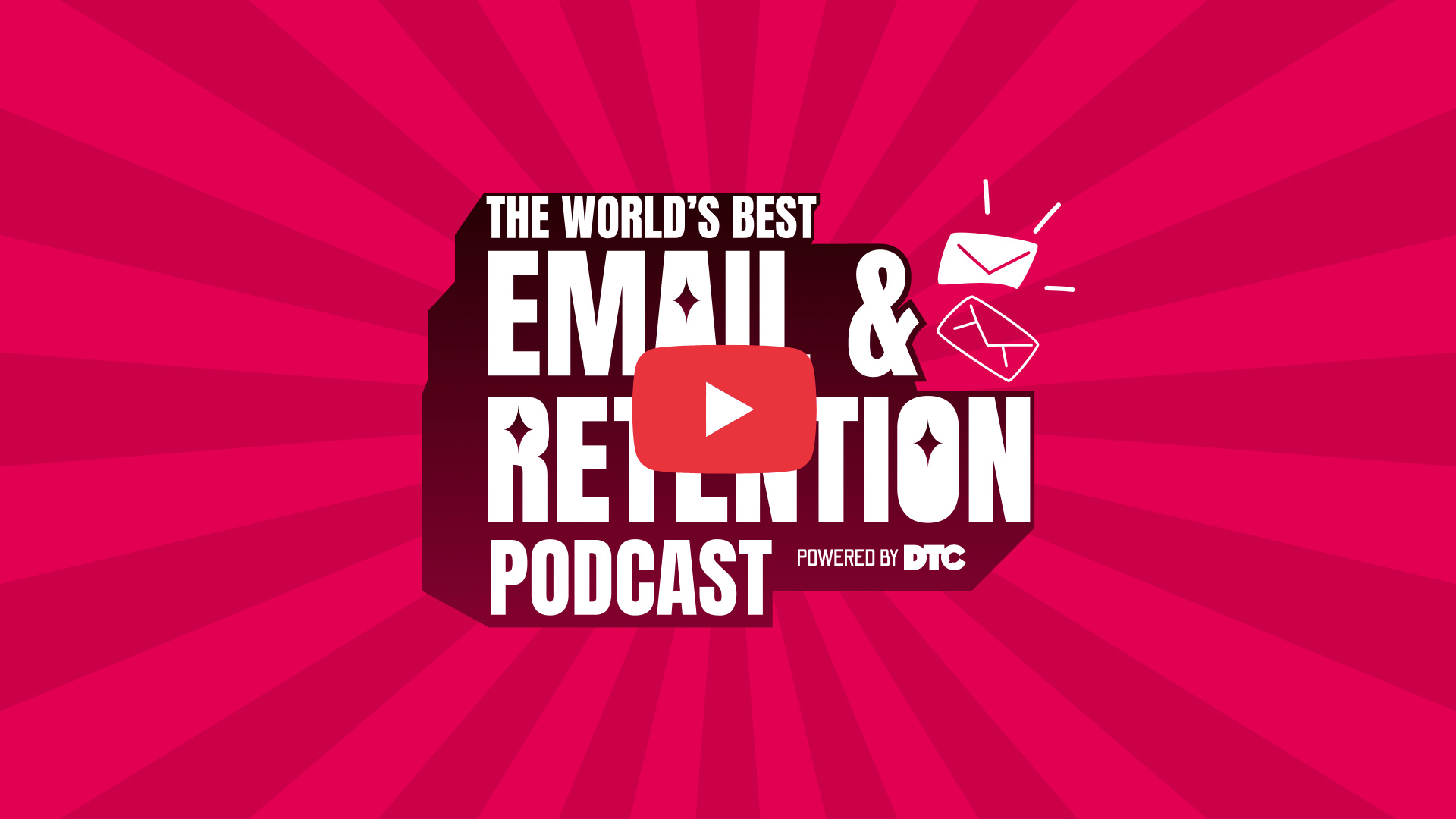
Back

Content
Content

Welcome to the DTC family!
Oops! Something went wrong while submitting the form.

Back

Content



Good morning,
Here’s what you’ll find in today’s DTC:
You’re reading this newsletter along with new subscribers from: Hershesons, Sea Cider, and EcoSafeSense. 👋

🎨 Meta’s New AI-Driven Delivery System, Andromeda, Just Rewrote the Playbook
Before: You could swap a headline, tweak a color, and call it a variation.
Now: Meta sees through that. It clusters lookalike ads, learns from everyone’s performance, and rewards creative that’s truly different and actually good.
Your “creative refresh” might already be stale.
The brands winning right now are:
✅ Producing creative at volume
✅ Learning fast from performance
✅ Closing the loop between creative and media
If you’re not doing all three, you’re likely seeing:
Pilothouse helps DTC brands adapt with a system that connects strategy, media, and creative so you’re never guessing what to make next.
Because the only way to keep up with Andromeda is to outpace it in output and insight.
👀 See what we’ve been building: Pilothouse Creative Portfolio
💬 Want to talk creative for your brand? Let’s connect

💰 How Highland Scaled Profitably Using This Tool
A few weeks ago, we had the co-founders of Highland on the DTC Podcast. They talked about this calculator during the episode, and a bunch of you reached out asking for it!
Here’s what the Highland team shared with us: 👇
Boone from Highland here! 👋
Throughout our journey as first-time founders, scaling to several hundred thousand in acquisition spend each month across Meta, Amazon, TikTok, and Google, we often asked ourselves:
How do we know we're not spending too much?
And how do we know we're not spending too little?
These are two important questions that keep many founders up at night 😅
For a bootstrapped brand like Highland, striking this delicate balance to ensure MoM profitably while growing a DTC brand is one of the most important marketing challenges we face.
Keep the brand alive and well, but don’t play it too conservatively and leave potential new customers on the table.
Here’s how you can figure this out for your growing brand, and we’ll even provide a calculator to eliminate the guesswork. 👇
To find the best way to answer this question for our specific business, we began exploring a new way to digest the numbers behind CAC, AOV, and LTV, aiming to identify our average payback period at different CACs.
For example, at a $35 CAC, how long does it take for that newly acquired customer to become a break-even investment?
Between CAC, cost of goods, 3PL fees, and postage, can we really afford to lose $10 on this new customer?
And while all businesses are different, we identified our ideal payback period to be 3 months, with the ability to tolerate all the way up to 6 months (though this is less than ideal), thanks largely supported by strong retention numbers.
The ideal payback period will differ across businesses and depend on factors such as growth stage, funding strategy, channel mix, product margins, and, most importantly, customer repurchase behavior.
The best approach is to start by consistently and accurately tracking these metrics over time.
Once you understand how your business acquires customers and how those customers engage with your products and return for more, you can define a payback window that balances growth efficiency with long-term brand health. 💡
Thanks to our incredible CFO team over at Ever+Other, we were able to collaborate on a calculator that takes CAC, AOV, & LTV to tell us exactly what our payback period is (based on historical data of repeat purchase behavior).
This calculator has become a critical tool in the Highland day-to-day, helping us to scale and pull back as needed, optimizing our spend to help us sleep at night, knowing that regardless of how well our ad account is performing, we’re no longer over- or underspending.

As BFCM approaches, avoid the biggest pricing trap: discounting without context.
Deep, unexplained discounts might drive short-term conversions but they quietly erode perceived value and train customers to never pay full price again.
Sarah Levinger explains studies show that when prices drop too far, shoppers assume something’s wrong with the product or brand.

🎧 Shaan Arora on the Real Pop-Up Levers: Copy, Timing, Segmentation
Shaan Arora, founder of Alia, a pop-up platform used by 2,500+ brands, joined The World’s Best Email and Retention Podcast this week and shared that while design matters, copy, timing, and segmentation make the real difference.
AI-driven testing takes the guesswork out of pop-ups. Instead of manually testing headlines or offers, Alia’s system automatically runs A/B tests, learns what wins, and iterates in real time.
The result? Brands see opt-in rates jump from 3–5% to 10–15% without using heavier discounts or intrusive designs.
In this episode, we dive into:
▶️ Watch the full episode on YouTube here.
🎧 Or click here to listen on Spotify.

Google Labs Launches AI Tool For SMBs
Google announced this week that an AI tool called Pomelli is available to help businesses generate scalable social media campaigns.
Businesses can enter their website URL so Pomelli can understand their brand identity, generate campaign ideas, and create high-quality creatives.

📥 Got a B2B Biz?
Join dozens of B2B companies finding demand-gen success through our niche community of 150k brand leaders and founders this year. Talk to our team to learn more.
Have you heard our latest podcasts?
Don’t forget to rate the DTC Podcast on Apple (⭐️⭐️⭐️⭐️⭐️)
DTC Newsletter is written by Rebecca Knight and Frances Du. Edited by Eric Dyck.
Please note that items in this newsletter marked with * contain sponsored content.
